While we love plants in our outdoor gardens and use greenery to liven up our indoor environment, certain flora can be deadly to our four-legged family members. Dogs often like to nibble on leaves and other foliage. While he may think they’re a tasty treat, we want to avoid unintentionally harming our furry companions.
Contents
- Related: The 10 Most Dangerous Ingredients In Pet Food
- 1. Rhododendron / Azalea
- 2. Oleander
- 3. Sago Palm / Cardboard Palm
- 4. Autumn Crocus
- 5. Foxglove
- 6. Allium
- 7. Milkweed
- 8. Yew / Western Yew / Japanese Yew
- 9. Periwinkle / Vinca
- 10. Larkspur
- 11. Perennial Pea / Sweet Pea
- 12. Laurel
- 13. Pieris / Lily of the Valley
- 14. Poison Parsnip / Water Hemlock / Cowbane
- 15. Sabi Star / Desert Rose / Mock Azalea / Kudu Lily
- 16. Cyclamen / Sowbread
- 17. Castor Bean / Castor Oil Plant / African Wonder Tree
- 18. Rosary Pea / Prayer Bean
- 19. Maleberry / Staggerbush
- 20. Dog Hobble / Black Laurel
- 21. Wax-Leaf Privet
- 22. Tobacco
- 23. Hops
- 24. Cannabis / Marijuana
- Infographic
Related: The 10 Most Dangerous Ingredients In Pet Food
Symptoms may start out with moderate to extreme stomach upset, but lead to organ failure, coma and even death. Although it’s difficult to teach our dogs to not eat plants, we can do our part in protecting them. It’s important to learn which seemingly harmless plants are toxic to dogs and remove potentially dangerous vegetation from our homes and yards.
1. Rhododendron / Azalea

Rhododendron and azalea (genus Rhododendron) are found in nearly every part of North America and have thousands of varieties. Most flower in the spring, but some are summer-blooming, and attract birds.
Toxins: Grayantoxin
Malicious Parts: The entire plant, especially the leaves.
Symptoms: Vomiting, diarrhea, hypersalivation (increased drooling), muscle weakness, hypotension (low blood pressure), cardiac arrhythmia (irregular heartbeat), depression of the central nervous system, cardiovascular collapse, coma and death (in as little as 1-2 days).
2. Oleander

Cultivated since ancient times, oleander (genus Nerium) is a highly popular ornamental shrub. It’s common in coastal regions and areas with little rainfall, including the west coast and southern states.
Toxins: Cardiac glycosides, nerioside, oleandroside, saponins
Malicious Parts: All parts, especially the sap.
Symptoms: Vomiting, diarrhea (possibly bloody), hypersalivation, cardiac arrhythmia, hypotension, incoordination, tremors, difficulty breathing, paralysis, coma and heart failure (death can be sudden).
3. Sago Palm / Cardboard Palm
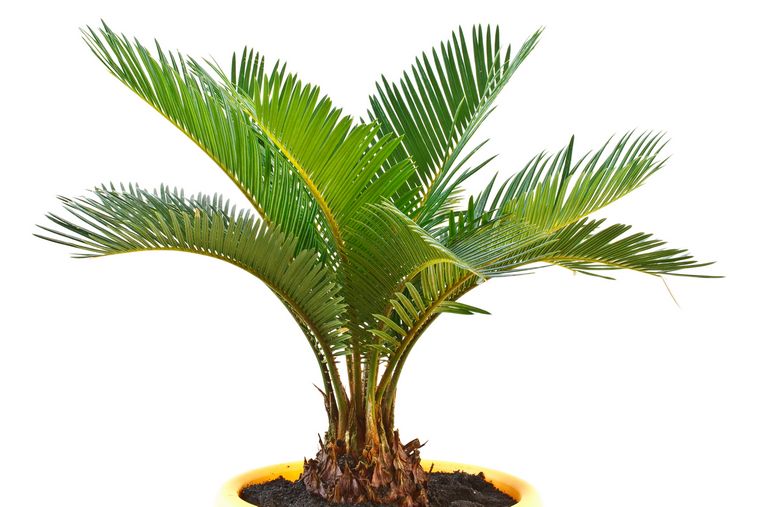
Popular for both outdoor landscaping and indoor ornamentals, sago palms (genus Cycas revolute) are native to the Far East, but can be found throughout the world. They’re older than the dinosaurs.
Toxins: Cycasin
Malicious Parts: All parts, but especially the seeds (nuts).
Symptoms: Vomiting, bloody diarrhea, jaundice, liver damage, liver failure and death (1-2 seeds can kill an average sized dog).
4. Autumn Crocus

Autumn crocus (genus Colchicum autumnale) is found throughout Europe, Northern Africa and parts of Asia. It’s often mistaken for non-toxic spring crocus, but though they look alike, they aren’t related.
Toxins: Colchicine and other toxic alkaloids
Malicious Parts: Leaves, stems, berries and roots with highest toxicity found in the bulbs.
Symptoms: Bloody vomiting and diarrhea, shock, seizures, bone marrow suppression, liver and kidney damage, respiratory failure and death (symptoms may be immediate or delayed for days).
5. Foxglove

A common, biennial garden plant, foxglove (genus Digitalis purpurea) is considered a medicinal plant. Thought to be native to parts of central Europe, it’s naturalized in North America, but listed as an invasive weed by the U.S. Department of Agriculture.
Toxins: Cardiac glycosides
Malicious Parts: All parts, including the leaves, stems and roots.
Symptoms: Vomiting, diarrhea, tremors, seizures, weakness, cardiac arrhythmias, heart failure and death. Severity varies with each individual plant and by which parts and how much of the plant is consumed.
6. Allium

Better known as chives, garlic, leek or onion. Wild and domesticated allium species are used for culinary purposes and in medicine practiced by various ethnic groups. Many different edible and ornamental species exist in North America.
Toxins: Organosulfoxides, alk(en)ylcysteine sulfoxides
Malicious Parts: Toxicity highest in leaves and bulbs with garlic more potent than onions.
Symptoms: Drooling, vomiting, diarrhea, abdominal pain, lethargy, weakness, hypotension, Hemolytic anemia (abnormal breakdown of red blood cells), jaundice, liver damage, liver failure, collapse and death (only in relatively high doses). Symptoms commonly develop after several days and severity depends on the plant species with certain breeds more sensitive than others.
7. Milkweed

Common milkweed (genus Asclepias) is popular with butterfly enthusiasts, because Monarch butterflies depend on it for survival. There are approximately 100 milkweed species and almost all of them are native to North America.
Toxins: Cardiac glycoside toxins, cardenolides or bufadienolides, neurotoxins
Malicious Parts: All parts.
Symptoms: Drooling, vomiting, diarrhea, weakness, anorexia, seizures, tremors, difficulty breathing, respiratory failure, cardiac arrhythmias, kidney or liver failure, coma and death.
8. Yew / Western Yew / Japanese Yew
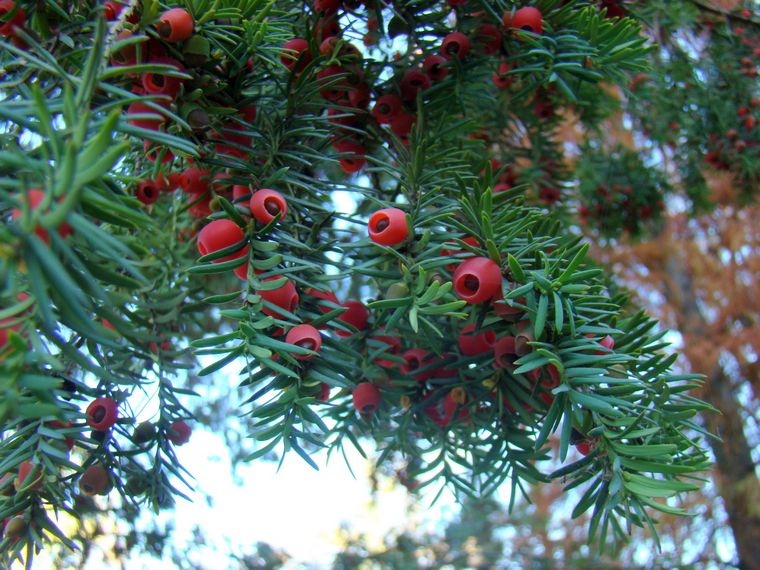
A common evergreen, the yew (genus Taxus) has been used in cancer-treatment drugs. Various species are found in North America, Europe and Asia and are often trimmed into hedges.
Toxins: Taxine
Malicious Parts: All parts, including the berries.
Symptoms: Drooling, vomiting, weakness, tremors, seizures, difficulty breathing, coma and death (can be sudden and caused by acute heart failure).
9. Periwinkle / Vinca
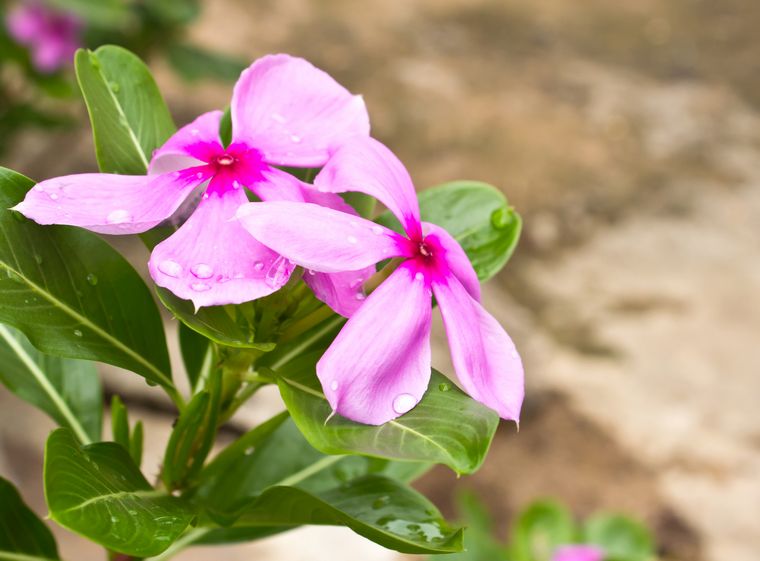
Native to Madagascar, periwinkle or vinca (genus Catharanthus rosea formerly Vinca rosea) is an annual in most regions of North America. It’s been cultivated for centuries in Europe, India, China and America and used in anti-cancer drugs.
Toxins: Vinca Alkaloids, yohimbine, vincristine, vinblastine
Malicious Parts: All parts.
Symptoms: Vomiting, diarrhea, depression, hypotension, tremors, seizures, coma, death (rare).
10. Larkspur
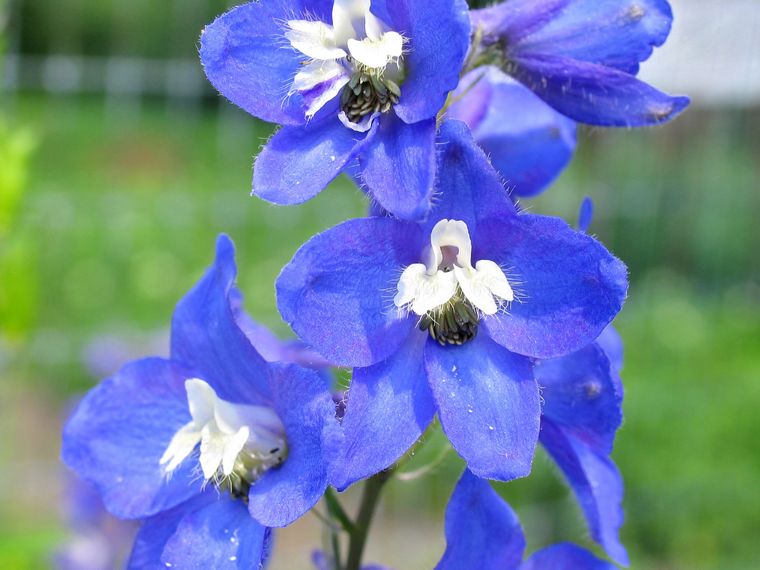
Larkspur (genus Delphinium) is the birthday flower of July. Popular as garden ornamentals and used as cut flowers in floral arrangements, they’re a cool season plant that grow across the U.S.
Toxins: Diterpene alkaloids
Malicious Parts: All parts, especially the sprouts.
Symptoms: Drooling, constipation, tremors, seizures, cardiac arrhythmia, paralysis, heart and lung failure and death. Toxicity varies based on seasonal changes. As it matures, plants typically become less toxic.
11. Perennial Pea / Sweet Pea

Sweet pea (genus Lathyrus latifolius) is native to Sicily, southern Italy and the Aegean Islands, but is naturalized across North America. It’s a fragrant, annual climbing plant popular in gardens.
Toxins: Aminoproprionitrite
Malicious Parts: All parts, especially the flowers and seeds.
Symptoms: Weakness, lethargy, tremors, seizures and death (possible in large doses).
12. Laurel
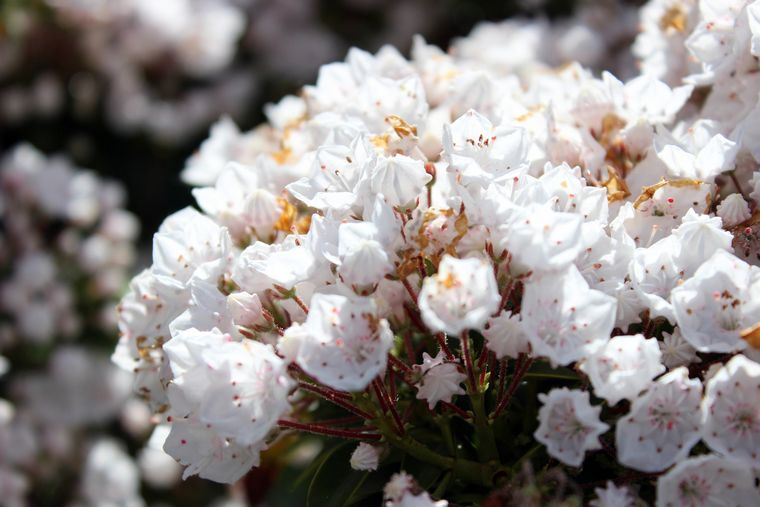
A flowering, evergreen shrub, laurel (genus Kalmia latifolia) is native to the eastern United States. Also called mountain laurel or calico bush, it’s ideal as a landscaping border.
Toxins: Grayanotoxins
Malicious Parts: All parts, especially the leaves.
Symptoms: Blistering of the mouth and stomach, drooling, vomiting, bloody diarrhea, weakness, hypotension, coma, cardiovascular failure and death. Serious symptoms can occur with the ingestion of just a few leaves.
13. Pieris / Lily of the Valley

Lily of the Valley (genus Pieris japonica) grows wild and is a common garden addition, due to butterfly attraction. It’s native to the mountain regions of Asia, Cuba and eastern North America.
Toxins: Grayanotoxins
Malicious Parts: Leaves and flowers.
Symptoms: Vomiting, diarrhea, depression, severe cardio arrhythmias, weakness, hypotension, seizures, cardiovascular failure, coma and death. Eating just a few leaves can cause severe symptoms.
14. Poison Parsnip / Water Hemlock / Cowbane
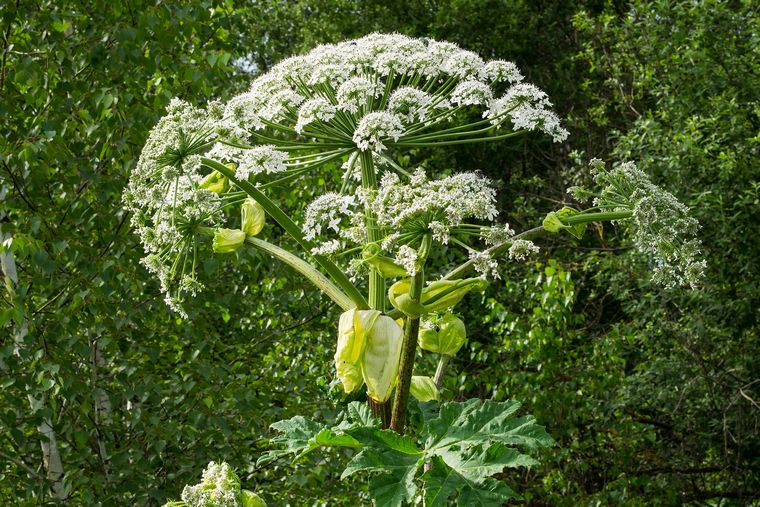
Cowbane (genus Cicuta maculate) is more commonly referred to as poison parsnip or water hemlock. It’s a natural wildflower that prefers wet, temperate areas. It’s mainly native to North America and Europe.
Toxins: Cicutoxin and cicutol.
Malicious Parts: All parts, especially the roots.
Symptoms: Drooling, diarrhea, fever, weakness, seizures, cardiac arrhythmias, difficulty breathing, respiratory failure and death. Considered one of the most toxic plants.
15. Sabi Star / Desert Rose / Mock Azalea / Kudu Lily
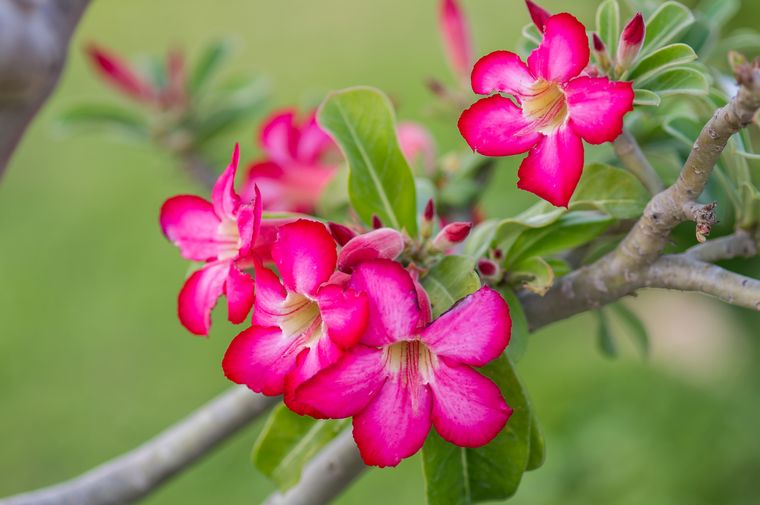
A bold, flowering plant the sabi star (genus Adenium obesum) has many other common names. Native to regions south of the Sahara and tropical areas of Africa and Arabia, it’s now commonly found in homes and gardens.
Toxins: Digitalis like glycosides
Malicious Parts: All parts.
Symptoms: Drooling, vomiting, weakness, tremors, seizures, anorexia, cardiac arrhythmias and death. Although the unsavory taste of the plant discourages ingestion, it only takes a small amount to be lethal.
16. Cyclamen / Sowbread
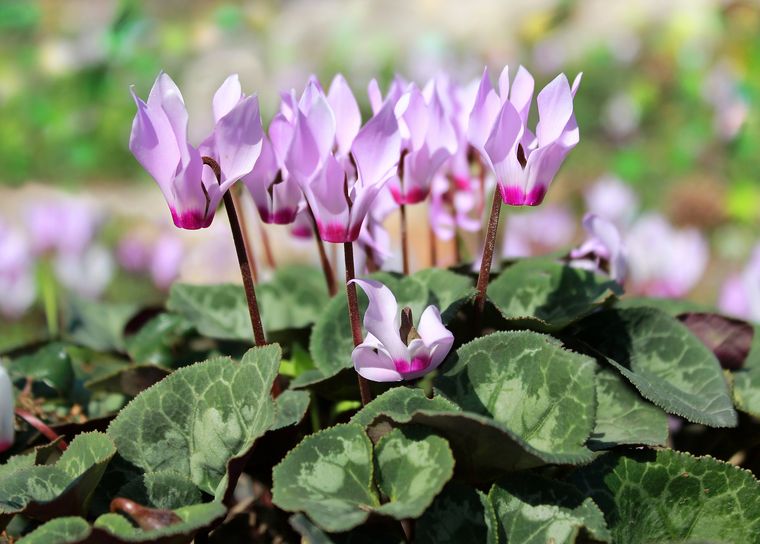
Originating in the Middle East, Sowbread (genus Cyclamen) slowly made its way through Europe and around the world. Often grown in an outdoor garden, they have also become a popular houseplant.
Toxins: Terpenoid saponins, cyclamine
Malicious Parts: All parts, especially roots.
Symptoms: Drooling, vomiting, diarrhea, cardiac arrhythmia, seizures and death (with large ingestion).
17. Castor Bean / Castor Oil Plant / African Wonder Tree
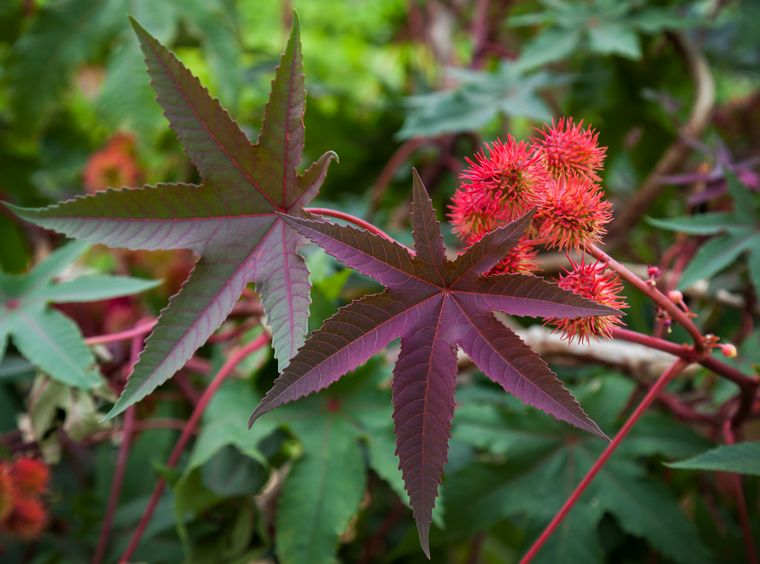
Castor bean (genus Ricinus communis) plants are perennial shrubs. They are only semi-popular as garden ornamentals, but are often used as landscaping plants in parks and other public areas.
Toxins: Ricin
Malicious Parts: All parts, especially beans or seeds.
Symptoms: Loss of appetite, drooling, excessive thirst, vomiting, severe diarrhea (often bloody), weakness, tremors, hypotension, seizures, depression of central nervous system, fever, kidney failure, coma and death. Small amounts can be lethal and death can occur as soon as 36 hours after consumption.
18. Rosary Pea / Prayer Bean
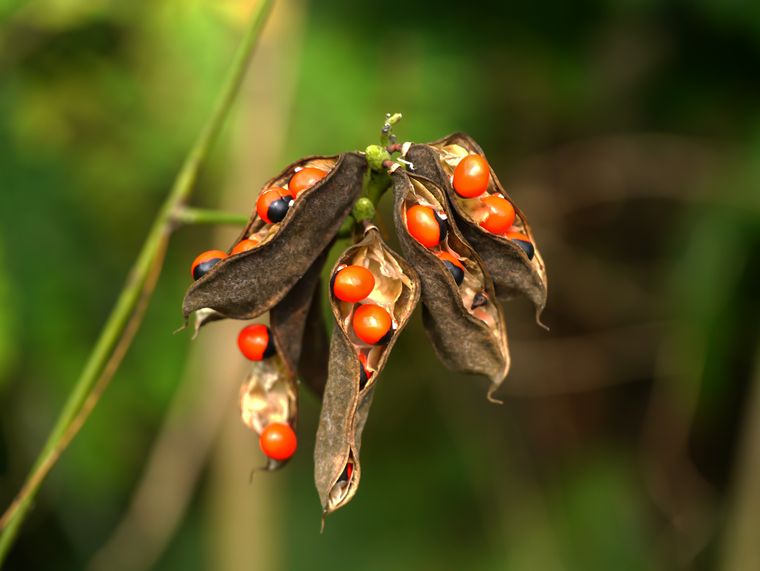
The rosary pea (genus Abrus precatorius) is known by many names. It’s native to India, but grows in tropical/subtropical regions worldwide where it’s been introduced. The seeds are used for beads.
Toxins: Abrin (lectin or toxalbumin) and abric acid
Malicious Parts: Seeds
Symptoms: Vomiting and diarrhea (possibly bloody), elevated heart rate, tremors, fever, shock and death. Poisoning occurs when the seed coat is broken.
19. Maleberry / Staggerbush
Native to the eastern United States, Texas and Oklahoma, maleberry (genus Lyonia) is a common shrub. It prefers to grow in moist, dry woods, but can be cultivated in a greenhouse.
Toxins: Grayanotoxins, arbutin glucoside
Malicious Parts: All parts.
Symptoms: Vomiting, diarrhea, depression, weakness, difficulty breathing, hypotension, cardiovascular failure, coma and death (possible in high doses).
20. Dog Hobble / Black Laurel

Dog Hobble (genus Leucothoe) is a flowering shrub that’s native to Madagascar, Asia and the Americas. It’s used in landscaping as woody ornamental shrub and is deer resistant.
Toxins: Grayanotoxins, arbutin glucoside
Malicious Parts: Leaves and nectar from flowers.
Symptoms: Drooling, vomiting, diarrhea, depression, weakness, hypotension, paralysis, coma, cardiovascular failure and death. Severe symptoms may occur with ingestion of just a few leaves.
21. Wax-Leaf Privet
Also known as a common privet, the wax-leaf (genus Ligustrum japonicum) is compact with glossy leaves. It’s a flowering shrub that attracts bees and works well as a hedge or windbreak.
Toxins: Terpenoid glycosides, oleanolic acid
Malicious Parts: All parts.
Symptoms: Stomach upset, vomiting, diarrhea, anorexia, incoordination, elevated heart and respiratory rates and in rare cases, death.
22. Tobacco

Dogs will most likely come into contact with wild growing tree tobacco (genus Nicotiana glauca). Although it’s native to Argentina, Bolivia and Paraguay, it’s now found growing throughout the southern U.S. from California to North Carolina.
Toxins: Nicotine and anabasine
Malicious Parts: All parts, except the seeds.
Symptoms: Hyperexcitability followed by depression, vomiting, diarrhea, cardiac arrhythmia, incoordination, tremors, seizures, respiratory failure, paralysis and death.
23. Hops
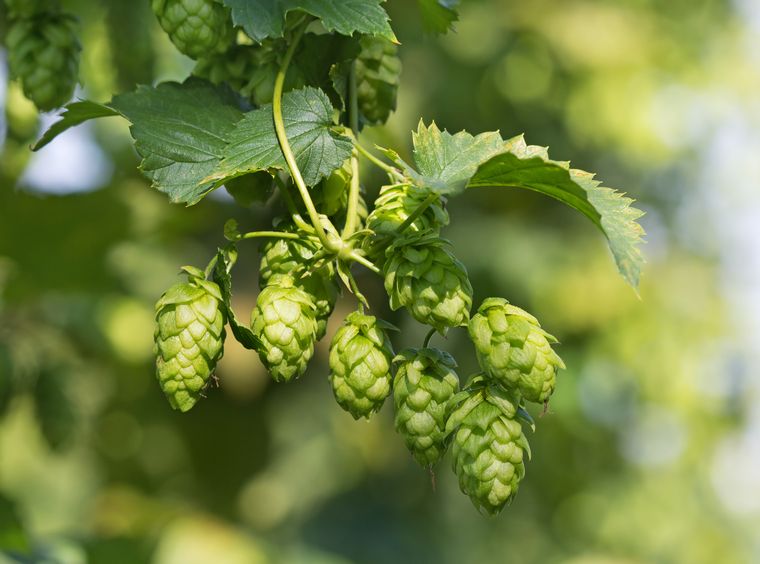
Growing or buying hops (genus Humulus lupulus) has increased with the growing popularity of home brewing and small craft breweries. This puts dogs at higher risk of exposure to unknown, lethal toxins.
Toxins: Unknown
Malicious Parts: All parts, especially dried hops plugs.
Symptoms: Panting, severely high body temperature, elevated heart rate, difficulty breathing, vomiting, seizures and death (possible in as little as six hours, without proper treatment for severely intoxicated dogs).
24. Cannabis / Marijuana

As more states legalize medical and/or recreational marijuana (genus Cannabis sativa), cannabis plants may become more common in backyard settings. Originally native to Central Asia and South Asia, plants are now found throughout the world.
Toxins: Delta-9-THC (tetrahydrocannabinol)
Malicious Parts: All parts, but especially the buds.
Symptoms: Vomiting, incoordination, drooling, lethargy, hypotension, appetite loss, seizure, coma and death (extremely rare, but possible with exceptionally large quantities ingested).
This is only a partial list of the more lethal plants that may be found in our homes and gardens or the wild. Some dogs also have personal sensitivities and allergies to certain plants. This could make reactions more acute than normal.
Infographic

I have lived in big cities my entire life. Having grown up on the Upper East Side in Manhattan, my early life was an exciting one, filled to the brim with interesting encounters and opportunities popping up at every street corner. Like many city people, my passion for dogs first started when my parents decided to bring a puppy into the household. For them, it was a way of getting me to spend less time at his computer or wandering aimlessly around the city with my friends. Little did they know that bringing a Labrador Retriever into their apartment would determine not only the course of their son’s professional career but also my love life.
Having obtained a Computer Science Bachelor’s degree from Fordham University, I went on to pursue an IT career in the Big Apple. After a few years of doing basic cybersecurity and tech support work in various offices around Manhattan, I decided to leave New York and look for my calling in Boston, Massachusetts. There, I got a Master’s degree in Computer Science with a specialization in Web Development. As a means of supporting myself through college, he found a salesman job at a local paper company, where he met Mary, the love of my life and the person I’d end up creating My Sweet Puppy with.






